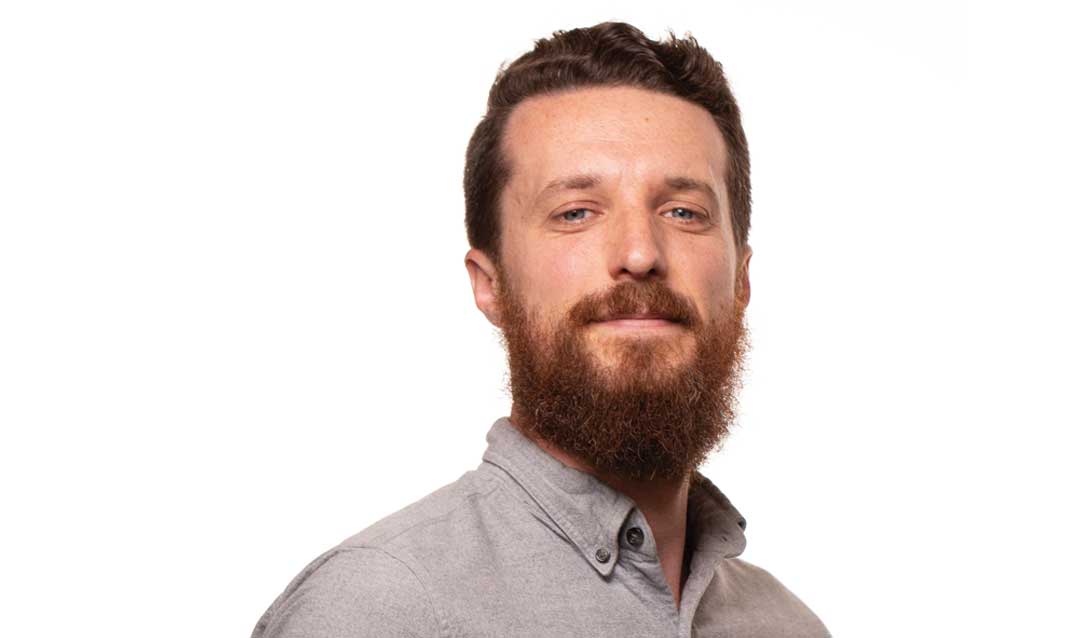Dr. Thomas McAndrew, a nationally recognized biostatistician who developed novel multi-model ensemble algorithms to forecast the seasonal flu and who used a consensus of expert opinions to predict the early trajectory of the COVID-19 pandemic, joined Lehigh’s College of Health (COH) on July 15, 2020. McAndrew comes to Lehigh from the University of Massachusetts at Amherst, where he was a postdoctoral fellow of biostatistics.
“I am delighted to welcome Dr. Thomas ‘Tom’ McAndrew to the university and the faculty of the College of Health,” said Whitney Witt, inaugural dean of the College. “Dr. McAndrew is a nationally recognized biostatistician who has created innovative and impactful methods for tracking epidemics and pandemics.”
“He is a member of an elite team of biostatisticians advising the Centers for Disease Control and Prevention (CDC) in forecasting seasonal influenza and now the COVID-19 pandemic,” she said. “As a computational scientist, Dr. McAndrew is the first faculty member at Lehigh to conduct this cutting-edge, biostatistical modeling. He is a budding new scholar, an exceptional teacher and is deeply committed to building the COH.”
At Lehigh, McAndrew will continue to build novel ensemble models for forecasting infectious disease rates—endemic, epidemic and pandemic.
“The goal is to support public health decision-making,” McAndrew said. With forecasts of infectious disease rates—the number of expected cases, the number of expected deaths—public health experts at the CDC and state-, county- and local public health departments can better make decisions about important next steps, he said.
“Is there enough vaccine stockpile in the case of flu to meet demand? Should per diem staff be put on in advance because they're expecting a larger burden than they would have expected? So, the statistician plays a really invaluable role in processing data, understanding it, then communicating it to the people who need it,” he said.
Dean Witt said McAndrew will be a core contributor to the launch of Lehigh’s data science in health program in the university’s undergraduate, graduate and executive-level educational programs. “I look forward to working with Tom for many years to come,” she said.
McAndrew worked as a research assistant in oncology and pancreatic cancer trials at the Lombardi Comprehensive Cancer Center in Washington, D.C. Later, as a biostatistician at the Albert Einstein College of Medicine in New York, he studied Human papillomavirus (HPV) genetics and the relationship to cervical cancer. He then served as associate director of biostatistics at the Cardiovascular Research Foundation in New York, where he worked in cardiovascular clinical trials of stents, heart valves and other products for reducing incidents of damage from heart attacks.
McAndrew’s most recent focus at the University of Massachusetts at Amherst has been on infectious diseases, first seasonal flu and now COVID-19. McAndrew and his faculty advisor, Nicholas Reich, were producing ensemble forecasts, which are combinations of forecasts of seasonal influenza in the 10 Department of Health and Human Services reporting regions in the United States. They then sent the ensemble forecasts to the CDC to help with its decision-making in connection to seasonal influenza.
When COVID-19 flared, he and Reich began weekly surveys of public health and infectious disease experts to help predict the trajectory of future COVID-19 cases, hospitalizations and deaths. McAndrew and Reich designed, built and interpreted models to help them understand and explain the infectious disease dynamics and the related policy implications for the U.S. population. The group used ensemble methodology, incorporating 21 models in an open platform that shared data and coding to maximize forecasting capabilities.
As the pandemic widened, McAndrew noted, the experts' forecasts had become increasingly accurate. Findings have been reported in The Economist, Rolling Stone and fivethirtyeight.com.
“We're trying to ask questions that we think are important for any public health decision-making around coronavirus,” he said, “and then we're again submitting those to the CDC and also the public.”
With fellow researchers, he is now building an expert consensus prediction on developments related to COVID-19 vaccines and therapies.
McAndrew plans to establish a research lab at Lehigh to conduct forecasting in support of public health decision-making and to make an impact on students in teaching biostatistics. “One of the reasons I was attracted specifically to Lehigh University was that it's a research-focused university, and it really cares about its students,” he said.
This summer, Dr. McAndrew participated in Lehigh’s Mountaintop Summer Experience and helped mentor students in a project titled “Mathematical Modeling and Syndromic Surveillance of COVID-19 in Pennsylvania.” He was joined by additional faculty mentors, Drs. Hyunok Choi and Halcyon Skinner, both epidemiologists in Lehigh’s College of Health. The project, in its early stages, aims to build an integrated surveillance and forecasting system to predict the future burden of COVID-19 on the Commonwealth of Pennsylvania.
McAndrew received his bachelor’s degree in biomathematics from the University of Scranton, and his master’s degree in biostatistics from Georgetown University. He received his Ph.D. in mathematical science from the University of Vermont.





